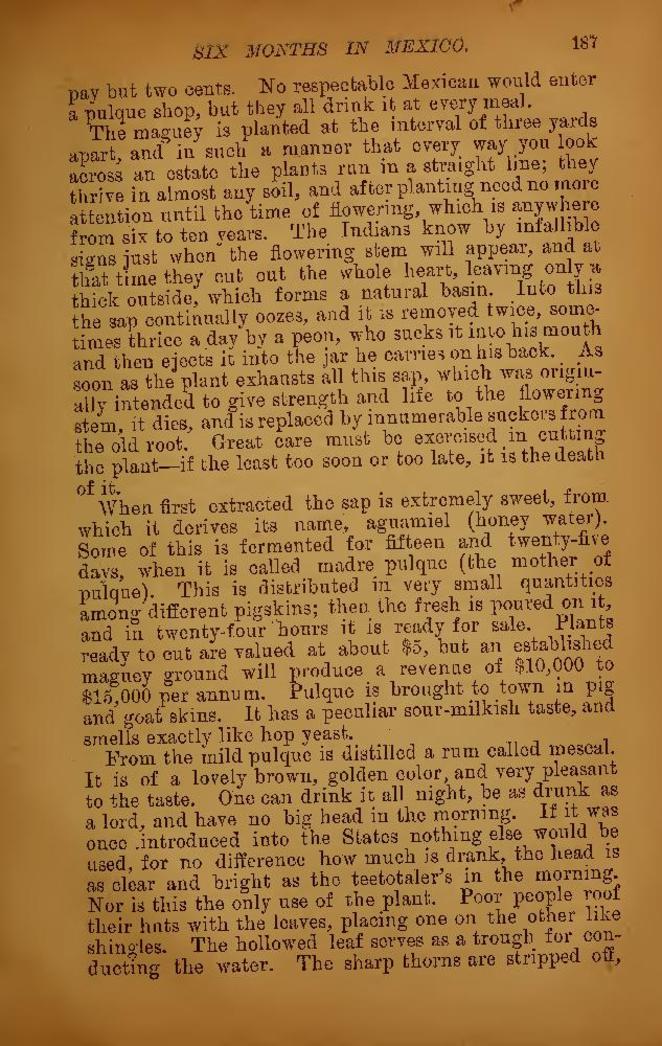pay but two cents. No respectable Mexican would enter a pulque shop, but they all drink it at every meal.
The maguey is planted at the interval of three yards apart, and in such a manner that every way you look across an estate the plants run in a straight line; they thrive in almost any soil, and after planting need no more attention until the time of flowering, which is anywhere from six to ten years. The Indians know by infallible signs just when the flowering stem will appear, and at that time they cut out the whole heart, leaving only a thick outside, which forms a natural basin. Into this the sap continually oozes, and it is removed twice, sometimes thrice a day by a peon, who sucks it into his mouth and then ejects it into the jar he carries on his back. As soon as the plant exhausts all this sap, which was originally intended to give strength and life to the flowering stem. It dies, and is replaced by innumerable suckers from the old root. Great care must be exercised in cutting the plant—if the least too soon or too late, it is the death of it.
When first extracted the sap is extremely sweet, from which it derives its name, aguamiel (honey water). Some of this is fermented for fifteen and twenty-five days, when it is called madre pulque (the mother of pulque.) This is distributed in very small quantities among different pigskins; then the fresh is poured on it, and in twenty-four hours it is ready for sale. Plants ready to cut are valued at about $5, but an established maguey ground will produce a revenue of $10,000 to $15,000 per annum. Pulque is brought to town in pig and goat skins. It has a peculiar sour-milkish taste, and smells exactly like hop yeast.
From the mild pulque is distilled a rum called mescal. It is of a lovely brown, golden color, and very pleasant to the taste. One can drink it all night, be as drunk as a lord, and have no big head in the morning. If it was once introduced into the States nothing else would be used, for no difference how much is drank, the head is as clear and bright as the teetotaler's in the morning. Nor is this the only use of the plant. Poor people roof their huts with the leaves, placing one on the other like shingles. The hollowed leaf serves as a trough for conducting the water. The sharp thorns are stripped off,
